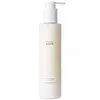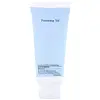What's inside
What's inside
 Key Ingredients
Key Ingredients

 Benefits
Benefits

 Concerns
Concerns

 Ingredients Side-by-side
Ingredients Side-by-side

Citrus Junos Peel Water 62.6%
Skin ConditioningMacadamia Ternifolia Seed Oil
EmollientWater
Skin ConditioningLauryl Glucoside
CleansingGlycerin
HumectantIsoamyl Laurate
EmollientCetearyl Alcohol
EmollientHydrogenated Vegetable Oil
EmollientCetearyl Olivate
Polyglyceryl-10 Oleate
Skin ConditioningGlyceryl Stearate Citrate
EmollientSorbitan Olivate
EmulsifyingAloe Barbadensis Leaf Extract
EmollientBioflavonoids
Skin ConditioningBrassica Oleracea Italica Extract
AstringentPropanediol
SolventAllantoin
Skin ConditioningTocopherol
AntioxidantScutellaria Baicalensis Root Extract
AstringentUlmus Davidiana Root Extract
Skin ConditioningGlycyrrhiza Glabra Root Extract
BleachingXanthan Gum
EmulsifyingCitric Acid
BufferingArginine
MaskingP-Anisic Acid
MaskingCitrus Junos Peel Water 62.6%, Macadamia Ternifolia Seed Oil, Water, Lauryl Glucoside, Glycerin, Isoamyl Laurate, Cetearyl Alcohol, Hydrogenated Vegetable Oil, Cetearyl Olivate, Polyglyceryl-10 Oleate, Glyceryl Stearate Citrate, Sorbitan Olivate, Aloe Barbadensis Leaf Extract, Bioflavonoids, Brassica Oleracea Italica Extract, Propanediol, Allantoin, Tocopherol, Scutellaria Baicalensis Root Extract, Ulmus Davidiana Root Extract, Glycyrrhiza Glabra Root Extract, Xanthan Gum, Citric Acid, Arginine, P-Anisic Acid
Water
Skin ConditioningSodium Cocoyl Isethionate
CleansingGlycerin
HumectantCoconut Acid
CleansingPolyquaternium-67
1,2-Hexanediol
Skin ConditioningSodium Isethionate
CleansingSodium Methyl Cocoyl Taurate
CleansingLitsea Cubeba Fruit Oil
MaskingSodium Chloride
MaskingDisodium EDTA
Ethylhexylglycerin
Skin ConditioningSodium Acetate
BufferingButylene Glycol
HumectantCentella Asiatica Extract
CleansingPortulaca Oleracea Extract
Skin ConditioningCamellia Sinensis Leaf Extract
AntimicrobialHamamelis Virginiana Extract
AntiseborrhoeicSodium Hyaluronate
HumectantBeta-Glucan
Skin ConditioningMelaleuca Alternifolia Leaf Extract
PerfumingPhaseolus Angularis Seed Extract
AntioxidantPentylene Glycol
Skin ConditioningCaprylyl Glycol
EmollientDiatomaceous Earth
AbrasiveIsopropyl Alcohol
SolventCitric Acid
BufferingWater, Sodium Cocoyl Isethionate, Glycerin, Coconut Acid, Polyquaternium-67, 1,2-Hexanediol, Sodium Isethionate, Sodium Methyl Cocoyl Taurate, Litsea Cubeba Fruit Oil, Sodium Chloride, Disodium EDTA, Ethylhexylglycerin, Sodium Acetate, Butylene Glycol, Centella Asiatica Extract, Portulaca Oleracea Extract, Camellia Sinensis Leaf Extract, Hamamelis Virginiana Extract, Sodium Hyaluronate, Beta-Glucan, Melaleuca Alternifolia Leaf Extract, Phaseolus Angularis Seed Extract, Pentylene Glycol, Caprylyl Glycol, Diatomaceous Earth, Isopropyl Alcohol, Citric Acid
 Reviews
Reviews

Ingredients Explained
These ingredients are found in both products.
Ingredients higher up in an ingredient list are typically present in a larger amount.
Citric Acid is an alpha hydroxy acid (AHA) naturally found in citrus fruits like oranges, lemons, and limes.
Like other AHAs, citric acid can exfoliate skin by breaking down the bonds that hold dead skin cells together. This helps reveal smoother and brighter skin underneath.
However, this exfoliating effect only happens at high concentrations (20%) which can be hard to find in cosmetic products.
Due to this, citric acid is usually included in small amounts as a pH adjuster. This helps keep products slightly more acidic and compatible with skin's natural pH.
In skincare formulas, citric acid can:
While it can provide some skin benefits, research shows lactic acid and glycolic acid are generally more effective and less irritating exfoliants.
Most citric acid used in skincare today is made by fermenting sugars (usually from molasses). This synthetic version is identical to the natural citrus form but easier to stabilize and use in formulations.
Read more about some other popular AHA's here:
Learn more about Citric AcidGlycerin is already naturally found in your skin. It helps moisturize and protect your skin.
A study from 2016 found glycerin to be more effective as a humectant than AHAs and hyaluronic acid.
As a humectant, it helps the skin stay hydrated by pulling moisture to your skin. The low molecular weight of glycerin allows it to pull moisture into the deeper layers of your skin.
Hydrated skin improves your skin barrier; Your skin barrier helps protect against irritants and bacteria.
Glycerin has also been found to have antimicrobial and antiviral properties. Due to these properties, glycerin is often used in wound and burn treatments.
In cosmetics, glycerin is usually derived from plants such as soybean or palm. However, it can also be sourced from animals, such as tallow or animal fat.
This ingredient is organic, colorless, odorless, and non-toxic.
Glycerin is the name for this ingredient in American English. British English uses Glycerol/Glycerine.
Learn more about GlycerinWater. It's the most common cosmetic ingredient of all. You'll usually see it at the top of ingredient lists, meaning that it makes up the largest part of the product.
So why is it so popular? Water most often acts as a solvent - this means that it helps dissolve other ingredients into the formulation.
You'll also recognize water as that liquid we all need to stay alive. If you see this, drink a glass of water. Stay hydrated!
Learn more about Water